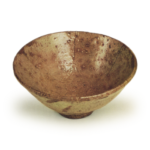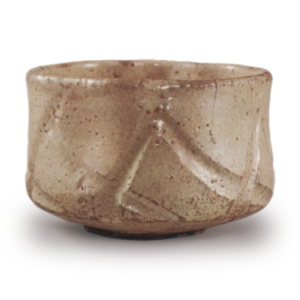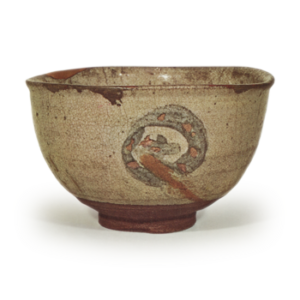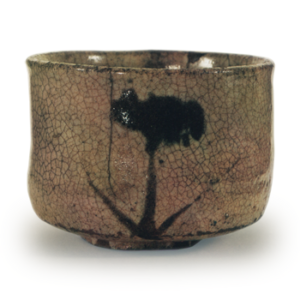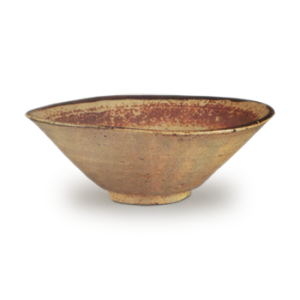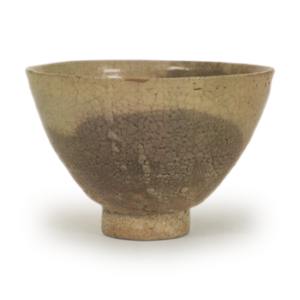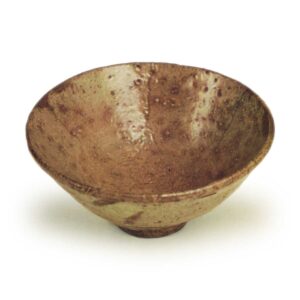
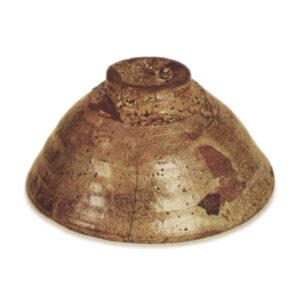
Meibutsu
Height: 6.7 to 7.0 cm
Diameter: 13.6 to 13.8 cm
Outer diameter of foot ring: 4.3 to 4.6 cm
Height of foot ring: 1.2 to 1.3 cm
The Yomogi jar is one of the three jars, or three mountains, in the sea, as described in the Shuikki (A Record of Matters Left Behind). It is also called Horai, and is an island said to be inhabited by immortals in the eastern sea. It has been well known since ancient times through the poetry of Bai Juyi and Li Bo.
In addition, the “Horai” Aoido teacup in the collection of the Osaka Yamaguchi family is also well known, and both of these are probably named after the glaze, which resembles the dense atmosphere of a mountain inhabited by immortals.
The shape is quite tall for an Aoido teacup, and the overall shape is rather thin. The foot ring is not very deep, but it is small and tight, and has a knotted bamboo appearance. The glaze on the outside is thin throughout, and the craquelure is fine. There are also small and large fire marks on the body, and there is a spot where the glaze has come undone. The kaaragi (a type of pattern) on the inside and outside of the foot ring is clearly visible, and in particular, the kaaragi on the inside of the foot ring is outstanding.
However, the most distinctive feature of this tea bowl is the rich variety of glaze tones on the inside. The glaze, which has a bluish tinge, is covered with dark, decayed-leaf-colored spots, and small holes can be seen in the glaze.
There are five marks where the eyes would have been, and the center of the marks is slightly sunken, with the marks from the potter’s wheel forming a spiral pattern. Although the overall impression is not one of a work full of power and depth, the varied glaze has a certain charm that will not fail to capture the heart of a sukiya (tea ceremony) enthusiast.
Inner box: Shunkei lacquerware, silver powder letters on the lid, unknown author, “Yomogi-tsubo”
As the “Taisho Meiki Kan” (Taisho Era Masterpieces) states, it is known to have come from the Kyoto tool dealer Matsuoka Kihei, but nothing else is known about it. It is said to have come into the possession of Fujita Hikosaburo at the end of the Meiji era and the beginning of the Taisho era.

